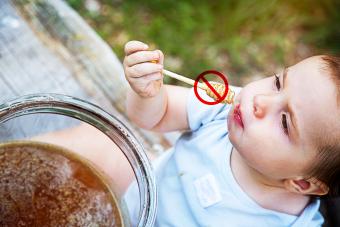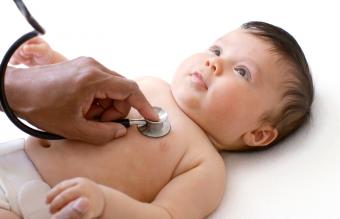
SIDS is the sudden, unexpected and unexplained death of a baby within his first year of life. In SIDS cases, infants pass away in their sleep, but no cause of death is ever found through autopsies and reviewing family and clinical histories. This type of death, which also may be called crib death or cot death, often leaves parents feeling helpless and vulnerable. Many times, parents blame themselves for their child's death and live with guilt for the rest of their lives.
Statistics on Sudden Infant Death Syndrome
The facts on Sudden Infant Death Syndrome (SIDS) are staggering. According to the CJ Foundation for SIDS, 2,226 infants died from SIDS in the United States in 2009. While research shows that the rate has dropped by about 50 percent since 1983, too many infants are still meeting this fate each year. The following statistical data shows just how common SIDS is, but also how the rate is continuing to decline. The CDC offers the following information:
- More than 4,500 infants in the United States die each year due to sudden unexplained infant death (SUID). SUID includes all cases of sudden death that are not immediately explainable.
- Of those deaths, half are attributed to SIDS. (SIDS is where even after an autopsy, no identifiable cause of death can be determined.)
- SIDS is the leading cause of all infants aged 1 to 12 months.
- SIDS is the third leading cause of infant mortality in the United States.
Risk Factors
As noted by the CDC, certain factors pertaining to age, race, sex, family history, and parental choices may increase the risk of SIDS. The Mayo Clinic lists the following risk factors.
- Boys are more likely to die of SIDS than girls.
- Infants in their second and third months of life are at a higher risk of dying of SIDS.
- Infants in families where siblings or cousins have died of SIDS are more vulnerable.
- Babies of mothers under the age of 20 are more vulnerable to SIDS.
- African American, Native American, and Alaskan Native babies have higher rates of SIDS than other populations.
- If the mother smokes, drinks, or abuses drugs, the baby has a higher chance of dying of SIDS.
Possible Causes
While the cause of SIDS remains unknown, there are correlations that suggest potential causes.
Long QT Syndrome (LQTS)
LQTS is a rhythmic disorder of the heart. It can cause fast or irregular heartbeats. According to the Mayo Clinic, approximately 10 percent of babies that have died from SIDS have genetic markers for LQTS, which is suggestive of a possible correlation between the two.
Physical Conditions
According to the Mayo Clinic, a correlation exists between certain physical factors or conditions and SIDS. These conditions include:
- Brain abnormalities, which may affect breathing and arousal in infants
- Breathing problems from recent colds or infections
Sleep Conditions
Certain sleep environments may also contribute to SIDS. According to a study performed at the University of New Mexico, a review of SIDS cases revealed a high correlation between the following sleep environments and SIDS:
- Sleeping on soft surfaces or with soft toys, pillows, and linens in the crib (71 percent of the cases studied)
- Lying on the side or stomach while asleep (52 percent of the cases studied)
- Co-sleeping in the parents' bed (50 percent of the cases studied)
These sleep conditions may cause the baby to rebreathe expelled air or narrow the baby's airway. Experts believe both of these conditions may contribute to SIDS.
Hyperthermia
Some experts suggest that if a baby overheats, he may experience an increase in the metabolic rate that makes it harder for the infant to control breathing. However, while there is a correlation between a baby being too warm during sleep and SIDS, it is difficult to determine whether the causative factor is hyperthermia or if the baby's clothing and covers cause some type of an airway obstruction.
Prevention
Since there is no known cause of SIDS, finding a cure or solution has not been easy. However, the American SIDS Institute recommends a number of risk mitigation strategies parents can take to protect their children.
- Back to Sleep - This simple slogan helps remind parents that it's important to place their babies on their backs to go to sleep.
- Safe Environment - Use a firm mattress, and remove all soft items from the crib including plush toys, covers, and bumper pads.
- Control temperature - Don't overdress your baby or turn up the heat to a temperature warmer than you would have it during the day.
- Don't smoke - Smoking during pregnancy, while breastfeeding, or in the baby's environment all increase the risk of SIDS.
- Don't co-sleep - It's okay to keep the baby in a bassinet or crib in your room, but keep him out of your bed.
- Breastfeed - If breastfeeding is possible, it can help reduce your child's risk of developing colds and infections.
- Offer a pacifier - According to the Mayo Clinic, this may reduce the risk of SIDS.
- Avoid Illness - Make an effort to keep sick people away from your baby. Also, encourage people to wash their hands before holding your baby.
- Talk to caregivers - Remind babysitters, daycare providers, and others who will be caring for your infant about providing the proper sleep environment for your baby.
More Information on SIDS
For more information or facts on Sudden Infant Death Syndrome, visit the following Web sites:
- CJ Foundation for SIDS offers information and resources for SIDS prevention, as well as help for bereaved parents.
- Safe to Sleep Public Information Campaign from the National Institutes of Health educates parents about SIDS prevention through safe sleeping conditions.
- Healthy Child Care America provides resources about safe sleeping and SIDS prevention.
Reducing the Risk
While the thought of SIDS frightens new parents, it is possible to manage risk. By controlling your child's sleep environment and focusing on good health, you can reduce your child's risk of SIDS.







